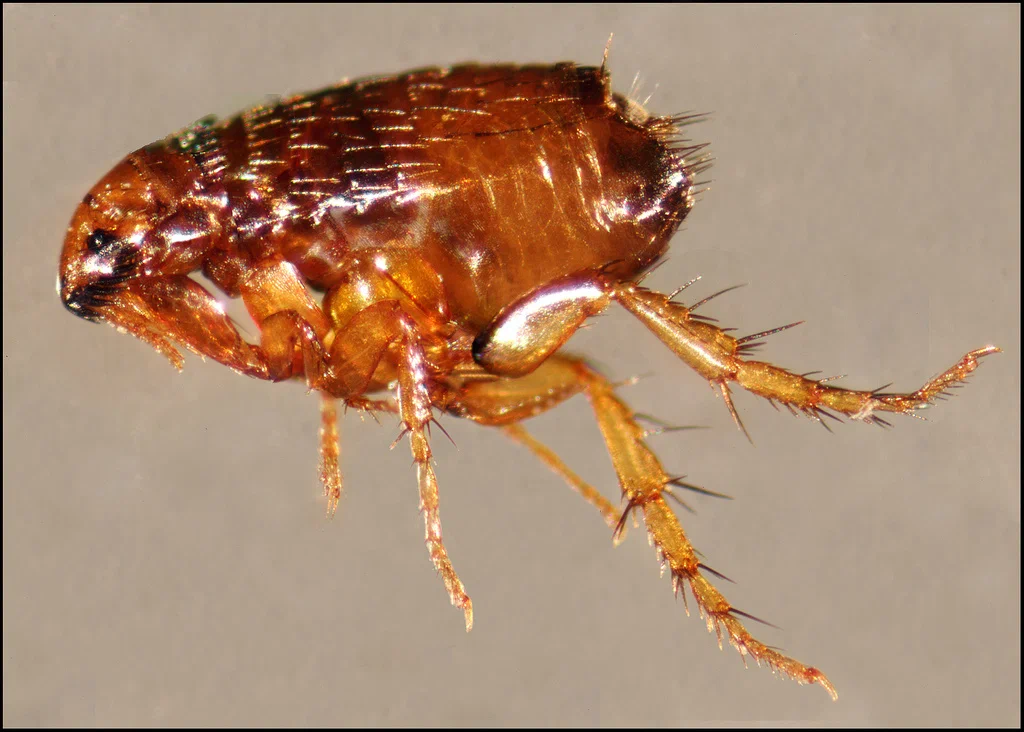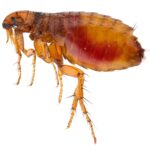Fleas are tiny, wingless insects known for their ability to jump long distances and cause immense irritation. While they are often associated with pets like dogs and cats, these pesky creatures can affect humans as well. But what exactly are fleas, and why are they such a problem? In this article, we’ll dive into the biology of fleas, the problems they cause, and why they can be such a hassle for both pets and humans alike.
What is a Flea?
Fleas belong to the order Siphonaptera and are parasitic insects that feed on the blood of mammals and birds. These insects are typically only 1/8 to 1/4 inch long, but their small size doesn’t make them any less of a nuisance. Fleas are known for their extraordinary jumping abilities, which allow them to leap up to 150 times their body length. Their bodies are flattened from side to side, which makes them excellent at moving through fur or feathers.
The most common flea species is the cat flea (Ctenocephalides felis), which can affect both cats and dogs. However, fleas are not limited to pets and can infest homes, especially if there are multiple animals or a lack of pest control measures.
The Life Cycle of a Flea
Fleas go through four stages in their life cycle: egg, larva, pupa, and adult. The life cycle starts when an adult female flea lays eggs on the host animal, usually in their fur. These eggs fall off the host into bedding, carpets, and other areas where the animal spends time. The larvae hatch from the eggs and feed on organic matter, such as flea feces, which consists of partially digested blood. After the larvae pupate, they emerge as adults and seek out a new host to begin the cycle again.
The entire life cycle can take as little as two weeks or as long as several months, depending on environmental conditions. This rapid reproduction rate is part of what makes fleas so difficult to control.
Why Are Fleas So Problematic?
- Irritation and Allergic Reactions
The most immediate issue with fleas is their ability to cause intense itching and irritation. Fleas bite to feed on blood, and during the process, they inject saliva that contains proteins. For some animals and humans, these proteins can trigger allergic reactions. The bite site becomes red, inflamed, and itchy, leading to excessive scratching. In pets, this can cause hair loss, scabs, and even open sores. For humans, flea bites often appear as small, raised bumps, typically around the ankles and legs.
- Flea-Borne Diseases
Fleas are not just annoying, they can also transmit serious diseases. One of the most notorious flea-borne illnesses is plague, which is caused by the bacterium Yersinia pestis. Historically, the Black Death, which killed millions in Europe, was spread by fleas that infested rats. While the risk of plague today is much lower, fleas can also carry other diseases, such as typhus, tapeworms, and cat scratch fever.
- Flea Infestations in the Home
Fleas don’t just affect pets; they can quickly spread to the home, leading to a full-scale infestation. Fleas thrive in warm, humid environments, which makes homes with pets or neglected spaces ideal breeding grounds. Once they infest an area, fleas can be difficult to eradicate. They hide in carpets, furniture, bedding, and cracks in the floor, making it challenging to remove every last one. As they multiply, the infestation can grow rapidly, leading to a significant problem that requires professional pest control.
- Cost of Treatment
Treating a flea infestation can be expensive and time-consuming. For pets, flea treatments include a variety of options, such as topical treatments, oral medications, flea collars, and shampoos. In severe cases, pets may need a veterinarian’s help to address secondary skin infections caused by excessive scratching.
For homes, flea eradication often involves a combination of chemical treatments, thorough cleaning, and vacuuming to remove eggs, larvae, and adult fleas. Professional pest control services may also be required for large infestations, adding to the overall cost.
- Impact on Pets’ Health
Beyond the immediate discomfort of itching and scratching, fleas can cause long-term health problems for pets. Chronic flea infestations can lead to flea anemia, especially in young or sick animals, due to the loss of blood. In addition, fleas are known to transmit tapeworms to pets when they accidentally ingest infected fleas during grooming. Fleas can also exacerbate skin conditions like hot spots and dermatitis in sensitive animals.
Preventing and Managing Fleas
The best way to deal with fleas is to prevent them from infesting your home and pets in the first place. Regular flea prevention treatments for pets, such as flea collars, oral medications, or topical treatments, are essential. Keeping your pet’s living environment clean by washing bedding, vacuuming frequently, and using flea treatments on carpets and furniture can help prevent an infestation.
If you’re dealing with a flea infestation, it’s important to act quickly. Fleas can multiply rapidly, so treating both the pet and the home is necessary. In some cases, professional pest control services may be required to fully eliminate the problem.

Conclusion
Fleas are tiny but highly problematic creatures that pose a significant threat to both pets and humans. Their ability to reproduce quickly, spread diseases, and cause irritation makes them a persistent pest. Preventing and managing flea infestations requires diligence, including regular treatments for pets and effective home cleaning. By understanding the biology of fleas and staying proactive with prevention measures, you can protect your pets and your home from these troublesome pests.



